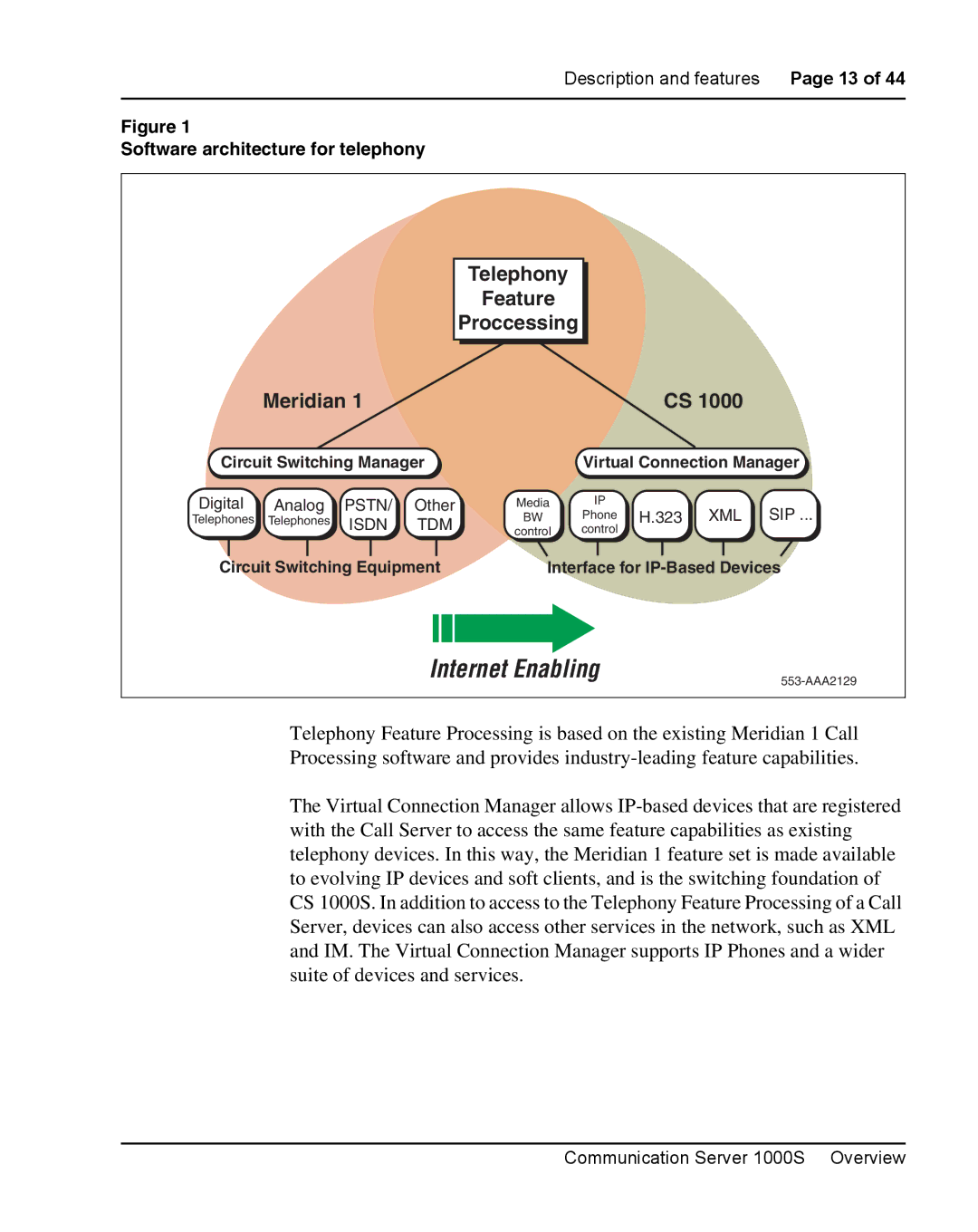1000S specifications
Nortel Networks 1000S is a sophisticated telecommunications platform designed to meet the demands of voice, data, and video communication in enterprise environments. Launched during a time when digital communication was rapidly evolving, the 1000S was developed to offer robust features that cater to various business needs.One of the primary features of the Nortel 1000S is its modular architecture, providing flexibility for businesses looking to scale their operations. This modularity enables users to customize the system according to their specific requirements by adding or removing components as needed. This adaptability is key for organizations experiencing growth or changes in their communication needs.
Another significant aspect of the 1000S is its support for Voice over Internet Protocol (VoIP). This technology allows for the transmission of voice calls using the internet rather than traditional telephone lines, which reduces costs and improves efficiency. The integration of VoIP into the 1000S system makes it an attractive solution for companies looking to modernize their communication infrastructure.
The Nortel 1000S also features advanced call processing capabilities, which enhance the quality and efficiency of voice communications. It supports multiple protocols, ensuring compatibility with various devices and systems. This feature is essential for businesses that require seamless integration with existing networks and communication tools.
In terms of user experience, the 1000S includes sophisticated user interfaces that allow for easy management and configuration of the system. It provides detailed reporting and analytics, enabling administrators to monitor usage patterns and troubleshoot issues effectively.
Moreover, the platform incorporates security features to protect sensitive data and communications. Built-in encryption and access controls ensure that only authorized personnel can access specific resources, an essential consideration for businesses handling confidential information.
Additionally, the 1000S is designed to support multimedia communications, including video conferencing capabilities. This feature is particularly relevant in today’s business environment, where remote work and virtual meetings have become commonplace. The ability to facilitate video interactions enhances collaboration among teams, regardless of their physical locations.
Overall, the Nortel Networks 1000S stands out as a comprehensive telecommunications solution, merging versatility, advanced technology, and user-centric design. Its ability to support various communication methods makes it a valuable asset for enterprises aiming to enhance their operational efficiency and improve team collaboration in an increasingly digital world.

